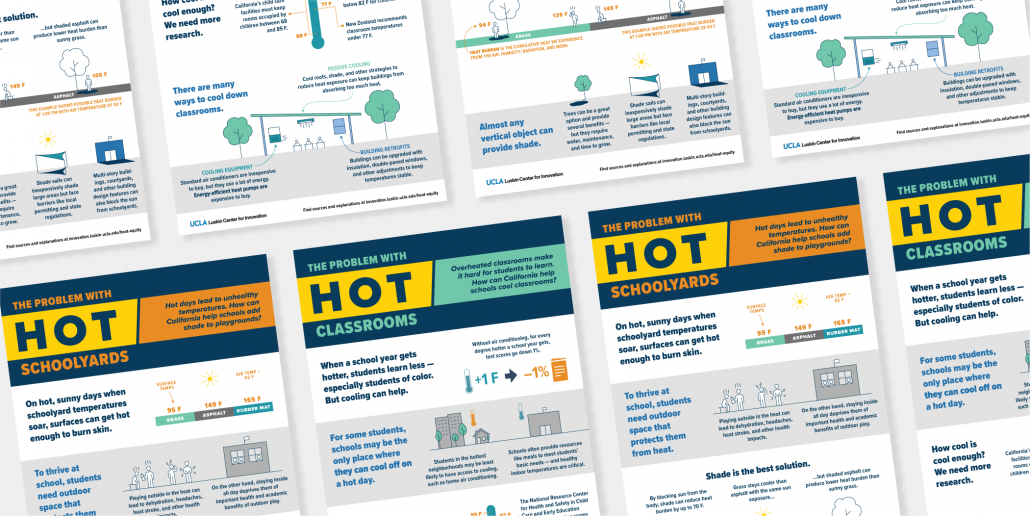Researchers equip policymakers to protect students from extreme heat
The Luskin Center for Innovation releases fact sheets and visuals to inform policy and funding decisions for heat-resilient K-12 schools
Extreme heat is a growing problem for California’s schools. Classroom and school yard temperatures can reach unhealthy levels and prevent students from learning, playing, and thriving on hot days. This is especially a problem in certain school districts, as illustrated in a heat mapping tool created by the Public Health Alliance of Southern California and the UCLA Luskin Center for Innovation. While there are many ways to address heat, there are also many obstacles to implementing effective and equitable strategies.
To present a simple starting point for policymakers and the public to understand how heat affects students at school as well as potential solutions, researchers at the Luskin Center for Innovation put together a resource kit that boils down the complexity into accessible fact sheets and visual infographics. Specifically, the new infographics illustrate how hot schoolyards and classrooms pose a threat to students’ learning and highlight strategies for addressing these issues.
In addition, the fact sheets highlight five recommended actions for the state, as identified in the Luskin Center for Innovation’s previously released policy brief, “Protecting Californians With Heat-Resilient Schools.” These five recommendations are:
- Collect data to track how schools experience extreme heat and the status of cooling interventions to understand needs
- Establish a statewide indoor temperature limit for schools based on children’s risk and effects on learning
- Mitigate heat exposure in schoolyards through evidence-based engineered and nature-based solutions
- Manage heat exposure in schools through informed behavioral interventions
- Identify funding gaps and inconsistencies that should be addressed for effective, targeted heat mitigation
The team created these materials alongside conversations with academic, advocacy, and government stakeholders working to protect students from extreme heat through a variety of actions.
A collection of the research in this series can be found here. To learn more about how extreme heat affects students, read our policy brief published earlier this year. For related research, visit our heat equity page.








